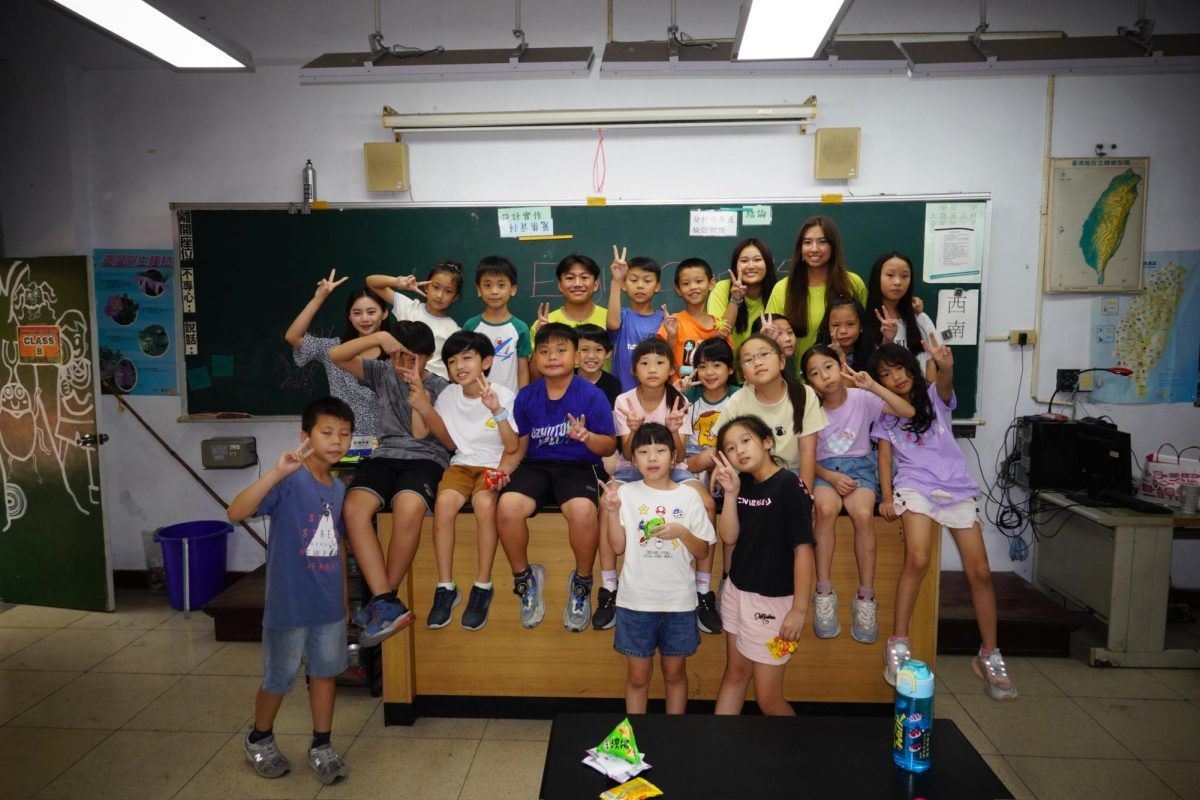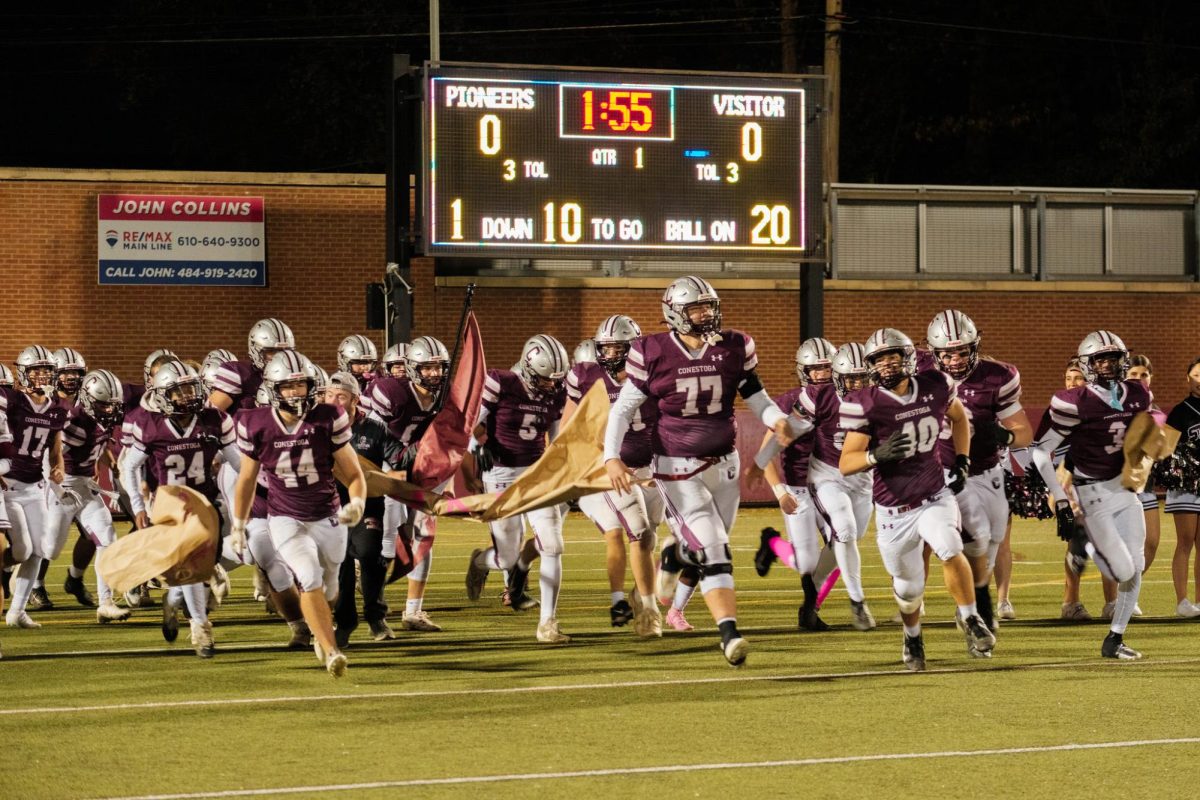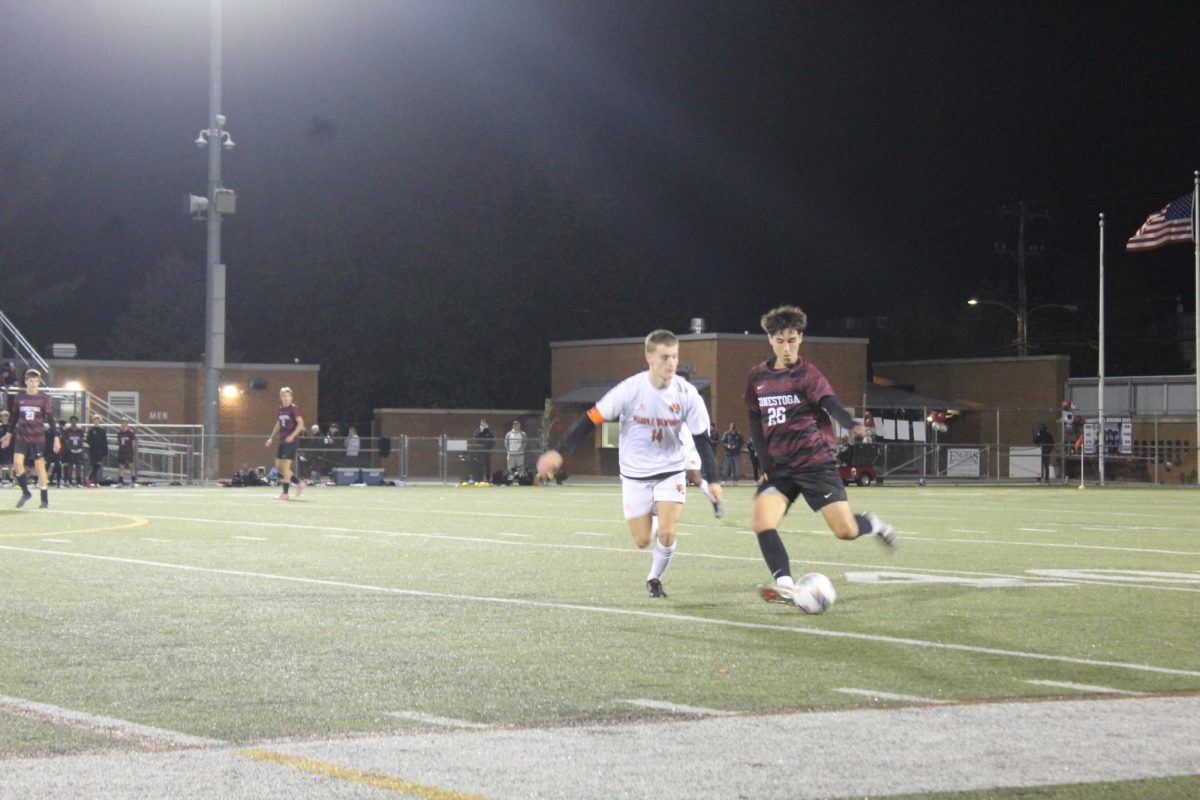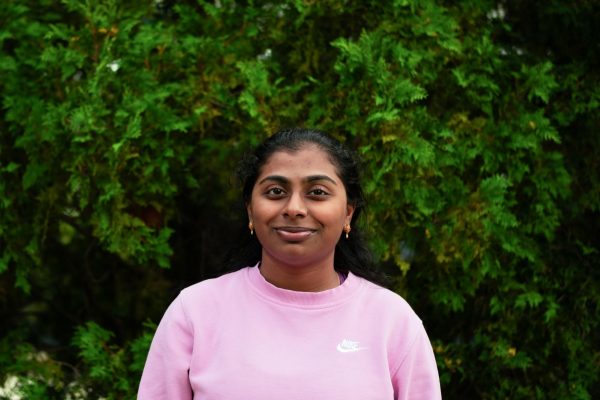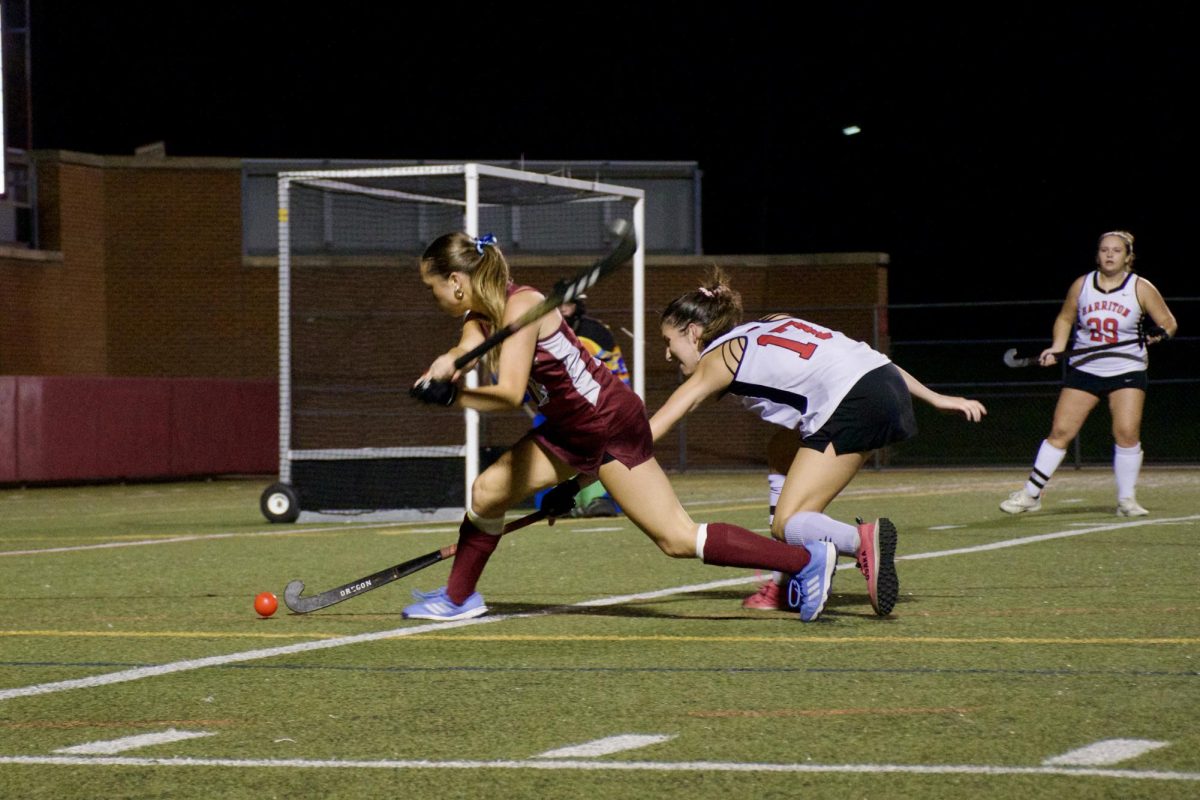By Vaishnavi Sriadibhatla, Co-Sports Editor
In the crisp September air, pandemonium erupts from the sidelines as field hockey team captain and senior midfielder Addie DelOrefice drag flicks yet another goal in the net. DelOrefice committed to the University of Vermont for field hockey during her junior year.
While DelOrefice was in the college recruitment process, coaches and scouts would visit and watch her play at games for the school and for her club team, Powerhouse Field Hockey. DelOrefice describes these games and the recruitment process as being especially stressful because of the pressure to perform well in front of recruiters.
“It’s definitely really stressful going through (recruitment) because you’re talking to coaches and you want to impress them,” DelOrefice said. “Going to showcases can be really stressful. I think in the end, you end up where you should be going.”
Many student-athletes will start their recruitment journeys near the end of their sophomore year. After June 15, college coaches can contact student-athletes. This date is extended for football, baseball, softball and women’s basketball players, who can only be contact coaches starting Sep. 1 of their junior year. As student-athletes weigh their options of schools, they will also decide whether to play at a Division I, II or III level program. The division dictates the intensity and emphasis placed on sports by the college, with Division I being the most intense.
“Only a small percentage get recruited and play at the next level. It’s under 10% on average. It’s not an easy thing to have a high school kid play collegiately. (Their) pool gets expanded so much because all the kids (are) vying for one spot,” athletic director Kevin Pechin said.
To prepare for recruitment, student-athletes usually email coaches to express interest in a particular school and attend clinics, training camps and showcases. Emailing coaches and attending these events is a common way to make athletes known to coaches.
Gunner Flesher is a sophomore and plays defense in lacrosse for Conestoga and his club team, Team Ten. Flesher will enter the recruitment process this summer and uses his goal of playing collegiately to motivate his training.
“I feel like in the back of my mind, I always had this dream that I wanted to play in college, but I wasn’t 100% sure about it,” Flesher said. “I’ve always been training like I would want to play because it’s the only way I feel like you’re going to get better. If you train like you’re going to be the best, at some point, you might become the best.”
Starting their junior year, all interested athletes can go on official and unofficial visits to the schools that they are interested in or that they received offers from. Coaches can start to make offers, to which students can only unofficially commit. During their senior year, athletes can officially commit to a college by signing a national letter of intent.
When recruiting students, coaches consider more than just the student’s athletic abilities. Coaches also take several other factors into account, including a student’s academics, work ethic, ability to work well with others, character and how they can fit in with the existing team.
“The (recruiters) don’t want academic risks. That’s what makes Conestoga so appealing. Our kids are not academically a risk. We perform academically and athletically,” Pechin said.
Flesher describes the recruiting process as extremely rewarding, despite how stressful it is in the beginning. As he continues to explore his options, he is excited for what the future holds.
“I feel like it seems like a lot of stress right now for me. I’m just excited because I know that wherever I go will be the right fit for me,” Flesher said. “I’m just trying to pick where I want to go. I don’t want to to go somewhere where someone else wants me to go or where my coaches feel. I feel like even though I honor their decision, I feel this is what’s best for me. I’m just really excited for it to come along.”
Vaishnavi Sriadibhatla can be reached at [email protected].









